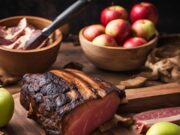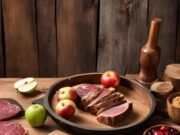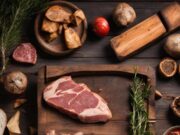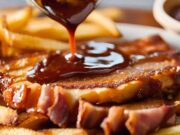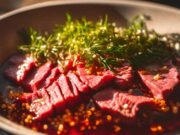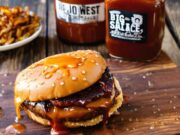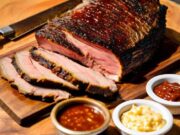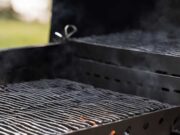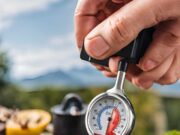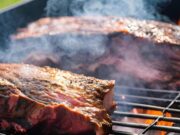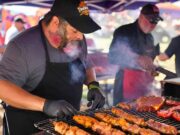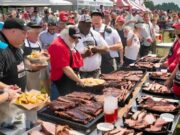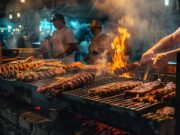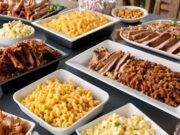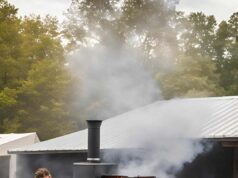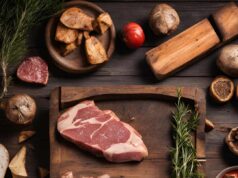Grilling is indeed an art, and mastering heat control is crucial for achieving exceptional results. Understanding the difference between direct and indirect heat can significantly enhance your BBQ skills, ensuring that you achieve everything from perfectly seared steaks to tender, slow-cooked ribs.
This guide will break down these two cooking methods, explore when to use each, highlight the best foods suited for both techniques, and provide tips for effectively combining them. Prepare to elevate your grilling experience to new heights.
Key Takeaways:
- Direct heat cooking is best for searing and cooking thinner cuts of meat, while indirect heat is ideal for slower cooking and larger cuts.
- Use direct heat for foods that cook quickly, like burgers and sausages, and indirect heat for longer cooking items like ribs and whole chickens.
- Combining direct and indirect heat can provide the best of both worlds, achieving a crispy exterior and juicy interior for meats. Don’t be afraid to experiment with both techniques to find the perfect balance for your BBQ grilling.
When to Use Direct Heat vs. Indirect Heat: A BBQ Grilling Guide
Understanding when to use direct heat versus indirect heat is essential for anyone looking to elevate their barbecue skills during the summer months.
Direct heat grilling is ideal for quick-cooking items such as steaks, burgers, and shrimp, allowing for a delicious, smoky flavor to develop with minimal effort. Conversely, indirect heat is best for larger cuts of meat or dishes that require slow cooking, such as grilled chicken or savory barbecue ribs, ensuring that each bite is tender and packed with flavor.
Understanding Direct and Indirect Heat
Understanding direct and indirect heat is essential for every home cook looking to achieve perfect results on the grill. Direct heat involves placing food directly over the flame, which allows for quick cooking and creates a delicious char that enhances the flavor of grilled meats, such as steaks and burgers.
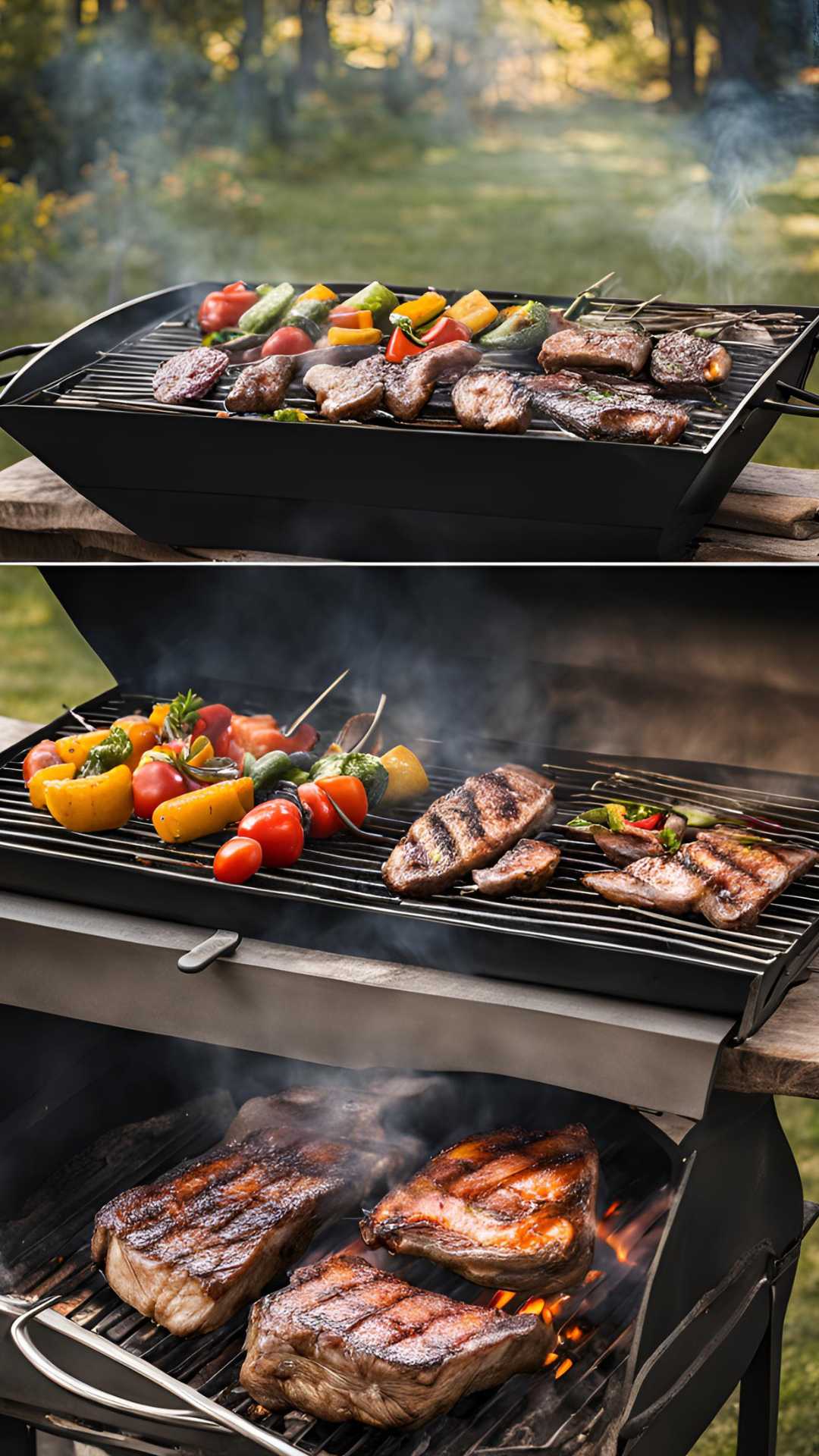
In contrast, indirect heat uses the ambient heat surrounding the food rather than direct flame, making it the preferred method for larger cuts of meat that require slower cooking, like whole chickens or smoked ribs. This technique ensures that these dishes remain juicy and flavorful throughout the cooking process.
What is Direct Heat Cooking?
Direct heat cooking is a grilling method that involves placing food directly over a heat source. This approach allows for high temperatures that cook quickly, creating the perfect sear on meats such as steaks and burgers.
This technique is particularly effective for items that benefit from a quick cook time, making it an excellent choice for seafood like shrimp and thin cuts of meat, which can easily become overcooked. When employing direct heat cooking, it is essential to ensure that the grill is adequately preheated to achieve a dramatic sear that locks in flavors while producing those appealing grill marks.
To enhance taste and texture, consider marinating the food beforehand and ensuring it is patted dry before grilling. This preparation allows for optimal caramelization. Additionally, maintaining a consistent temperature and flipping the food at the right moment are crucial steps for achieving the ideal balance of juiciness and crispness.
What is Indirect Heat Cooking?
Indirect heat cooking is a grilling technique where you place food away from the direct heat source. This approach allows for slower cooking and even heat distribution, making it ideal for larger cuts of meat, such as barbecue ribs or whole chickens.
This method offers the advantage of minimizing the risk of burning or charring the exterior while ensuring that the interior reaches the optimal temperature. It is especially beneficial for foods that require extended cooking times, such as roasts, smoked briskets, and delicate fish. By utilizing indirect heat, you can achieve tender and juicy results, enhancing flavors without the risk of overcooking.
Popular dishes that showcase this technique include:
- Beer can chicken, which imparts moisture and flavor
- Pulled pork, where the low and slow approach guarantees a melt-in-your-mouth texture
Additionally, this method allows for the addition of wood chips for smoking, further enriching the overall taste profile.
When to Use Direct Heat
Direct heat is the preferred grilling method when you aim to cook quickly and achieve a delicious char on your choice of foods. This technique is particularly well-suited for items such as steaks, burgers, and shrimp, which thrive under high temperatures and short cooking durations.
Best Foods for Direct Heat Cooking
The best foods for direct heat cooking include quick-cooking meats such as steaks, burgers, and shrimp, which develop a flavorful crust while maintaining juiciness on the inside.
Plus these favorites, you will find that vegetables like bell peppers, zucchini, and corn excel when grilled directly over high heat, enhancing their natural sweetness and vibrant flavors. If you appreciate a smoky taste, consider thinly sliced eggplant and asparagus as excellent options as well.
Regarding cooking techniques, ensure that the grill is preheated to achieve those desirable sear marks. It is also advisable to marinate meats beforehand to enhance their flavor.
Timing is crucial: while grills can vary, steaks generally require about 4-5 minutes per side, burgers about 3-4 minutes on each side, and shrimp only need 2-3 minutes for that perfect grilled finish every time. Do not hesitate to experiment with different marinades and spice rubs to elevate the taste of your grilled dishes.
When to Use Indirect Heat
Indirect heat is the preferred grilling method for preparing larger cuts of meat or dishes that require longer cooking times, such as barbecue ribs or a whole chicken. This technique allows for even cooking without the risk of burning the exterior.
Best Foods for Indirect Heat Cooking
The best foods for indirect heat cooking include larger cuts of meat, such as chicken and ribs, along with hearty vegetables that benefit from slow and steady heat to enhance their flavors. This cooking method enables these foods to absorb the smoky essence of the grill while ensuring they remain tender and juicy. For more information on when to use direct heat vs. indirect heat, check out this BBQ Grilling Guide.
When grilling meats like brisket or pork shoulder, it is crucial to maintain a low temperature, typically between 225°F to 275°F, to allow the connective tissues to break down gradually. For vegetables such as bell peppers and eggplant, employing a combination of indirect grilling with a bit of charcoal for flavor infusion can significantly enhance their natural sweetness.
Marinating these ingredients prior to grilling not only elevates their flavors but also adds moisture, resulting in an exceptional meal rich in depth. It is essential to monitor the cooking time closely, and consider using a meat thermometer to achieve the perfect doneness.
Benefits of Combining Direct and Indirect Heat
Combining direct and indirect heat in grilling provides numerous advantages, including the ability to achieve perfectly cooked meats while enhancing flavor. This technique allows for a balance of high-heat searing and low-heat cooking, making it a preferred method among barbecue enthusiasts.
Tips for Successfully Using Both Techniques
Mastering the art of utilizing both direct and indirect heat techniques in grilling involves understanding a few essential tips that will help ensure your barbecue dishes are consistently delicious and perfectly cooked each time.
Temperature Control
Temperature control is crucial when grilling, whether you are using direct or indirect heat, as it directly impacts the outcome of your dishes. This ensures that meats are cooked to the desired doneness without sacrificing flavor.
Understanding how to gauge heat levels is essential for a successful barbecue experience. Direct grilling typically requires high temperatures, which are ideal for searing steaks or vegetables, while indirect grilling allows for lower temperatures, making it perfect for slow-cooking larger cuts like brisket or whole chickens.
Investing in a reliable thermometer can significantly aid you in this process by allowing you to monitor temperatures accurately. Techniques such as the hand test or using a grill surface thermometer can also enhance your temperature control. Ultimately, mastering temperature management will pave the way for juicy, flavorful results that elevate any outdoor cooking session.
Making the Right Choice for Your BBQ
Making the right choice between direct and indirect heat for your barbecue can significantly enhance the flavors and textures of your favorite dishes, leading to a satisfying and delicious grilling experience.
When considering your grilling approach, it is essential to evaluate the specific types of foods you commonly prepare and how those items would benefit from either method. Direct heat is ideal for searing steaks, burgers, and vegetables, providing that coveted outer char and quick cooking time. Conversely, indirect heat works wonders for larger cuts like ribs or whole chickens, allowing them to cook thoroughly without burning.
By understanding these techniques, you can truly elevate your outdoor culinary skills. Ultimately, mastering both direct and indirect methods not only diversifies your barbecue repertoire but also ensures that every meal you prepare is a standout delight.
Frequently Asked Questions
What is direct heat and when should I use it for BBQ grilling?
Direct heat is when the food is placed directly over the heat source, such as flames or hot coals. It is best used for quick-cooking items like steaks, burgers, and vegetables.
When should I use indirect heat for BBQ grilling?
Indirect heat is when the food is not placed directly over the heat source, but off to the side. It is best used for slower cooking items like whole chickens, ribs, and roasts.
How do I set up my grill for indirect heat?
To set up your grill for indirect heat, light the charcoal on one side of the grill and place the food on the other side. For gas grills, turn off the burners on one side and place the food on the other side.
Can I use direct and indirect heat together for BBQ grilling?
Yes, you can use a combination of direct and indirect heat for more versatile grilling. This is known as the two-zone method, where the food is started on direct heat and moved to indirect heat to finish cooking.
What type of food is best for direct heat grilling?
Foods that are best for direct heat grilling are those that are thin or have a high water content, such as steaks, burgers, hot dogs, and vegetables.
What type of food is best for indirect heat grilling?
Foods that are best for indirect heat grilling are those that are thicker and require longer cooking times, such as whole chickens, ribs, and large cuts of meat.



